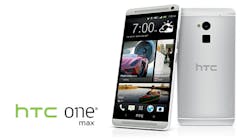By leveraging a combination of different technologies, a super-high-speed wireless network was recently demonstrated at 50 to 60 Mb/s. Peak speeds are expected to increase over time with a potential of reaching 1 and possibly even 2 Gb/s. While LTE has already provided significant improvement to network speeds, the network’s additional use of the 2.5-GHz spectrum provides even greater wireless capabilities. This technology could surpass the wireless speeds of all current US network providers.
Dubbed Sprint Spark, it uses a combination of advanced features: 1x, 2x, and 3x carrier aggregation for speed; multiple-input multiple-output (MIMO) for capacity; and time-division duplexing (TDD) for spectral efficiency. More specifically, Spark combines 4G frequency-division-duplexing (FDD) LTE at 800 MHz, 1.9 GHz and TDD-LTE at 2.5 GHz, TDD-LTE technology, and carrier aggregation in the 2.5-GHz band. The architecture allows for network delivery via tri-band wireless devices, which accommodate multiple spectrum bands between 800 MHz, 1.9 GHz, and 2.5 GHz and continuous coverage between them.
The company plans to use small cells to augment capacity, coverage, and speed alongside the 55,000 macro cell sites that it currently operates. Another key component in the plan is the Network Vision Initiative, which provides the 2.5-GHz radio heads that enable Sprint Spark while helping to optimize coverage. The radios are expected to have capabilities for eight transmitters and eight receivers—an approach known as 8T8R that has been previously unseen in North America. Such radios provide much improved abilities compared to the previous 2T2R and 4T4R generations.
The mix will provide tri-band capability and high-definition voice to customers in about 100 of the US’s largest cities over the next three years of deployment. Currently, the service has limited availability in five test markets: New York, Los Angeles, Chicago, Tampa, and Miami. The first smartphones with Sprint Spark capability will be available in early November 2013. The company expects the service to be available to 100 million Americans by the end of 2014.
